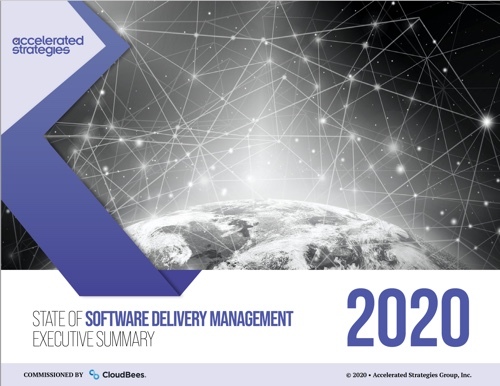
We have been delivering software ever since the advent of modern computing. How we deliver software is constantly evolving – always improving. A couple of decades ago the Agile movement made the first attempt at bringing Lean principles to the software delivery. A decade ago, we got the next major salvo of improvement with the advent of DevOps. Agile and DevOps have themselves evolved and become more fine-tuned to the needs of organizations of all sizes and maturity. That being said, Software Delivery is still not a mature competency for most organizations. Above all, the ability to manage software delivery, especially at enterprise scale, is still fraught with challenges.
The lack of Software Delivery Management maturity in many organizations is self-evident. The lack of ability to look at Software Delivery Management systemically as a business process is highlighted by the lack the ability to even properly quantify the value being delivered to the business by specific investments being made in software delivery. Most organizations struggle with not only properly measuring the business value of features they do deliver, and also measuring the negative impact of any features for which delivery may have been delayed. These should be bread and butter capabilities for any business that delivers any product to the market.
The root causes behind these challenges are not unknown or even misunderstood. Software in most organizations today is delivered via multiple interdependent software delivery supply chains and value streams, which span multi-generational technology stacks, multiple practitioners and management tools, with both home-grown and commercial applications and software packages, multiple suppliers and vendors, distributed teams, and multiple types of infrastructure and software deployment and consumption models, ranging from on-premises to SaaS. The level of complexity is a clear impediment to agility.
This complexity severely impacts the ability of organizations, from practitioners to decision-makers, to have any level of visibility into the status of work being performed, or of data measuring the flow of value throughout the value streams, or visibility into what may be adding friction to the desired flow. Practitioners hence, do not get full access to information they need to be able to perform their jobs or to be able to effectively collaborate and communicate with other stakeholders they need to work with. The managers and executives in turn, do not get access to the right, current and accurate data they need to make timely data-driven decisions regarding where to invest and where to focus to address inefficiencies in their ability to deliver software in a lean manner.
The emerging strategy of Software Delivery Management is continuing to gain traction, with the specific goal of providing organizations with a ‘set of aligned processes, practices, and organizational structures that allow all teams to have visibility, share information, and collaborate better. This results in the delivery of software applications and systems in a more effective and efficient way with predictability and definable business value’.
To understand the current state of Software Delivery Management, and to better quantify where Software Delivery Management as a strategy can deliver the most impact to organizations of all sizes and types, I had the opportunity to lead a research study for Accelerated Strategies Group, as Principal Analyst. This independent research study was commissioned by CloudBees. In the research study, the findings of which were published earlier today, we conducted a survey of practitioners and leaders from dozens of companies, across company size, industry, and geography. The research brought to light several insights that enhanced our understanding of the maturity level of most organizations’ ability to deliver software in a lean and efficient manner, and more importantly in the context of our research, to manage their ability to deliver software.
In the research report, we highlight three areas where Software Delivery Management can most impact organizations looking to improve their ability to deliver software effectively. Namely:
- Quantify the impact of investments in software delivery
- The capability of software delivery teams to communicate and collaborate
- End-to-end visibility into the value flow of software delivery streams
At Accelerated Strategies Group we believe that knowledge wants to be free. In that spirit, this research report is available free of cost on the Accelerated Strategies Group website (https://techstrongresearch.com). Please click on the link to access the executive summary of the report and the full report.
For any follow on discussions on the report or its findings and recommendations, please reach to me at [email protected] or on Twitter at @sd_architect. I would love to hear from you.
Sanjeev Sharma, Principal Analyst, Accelerated Strategies
